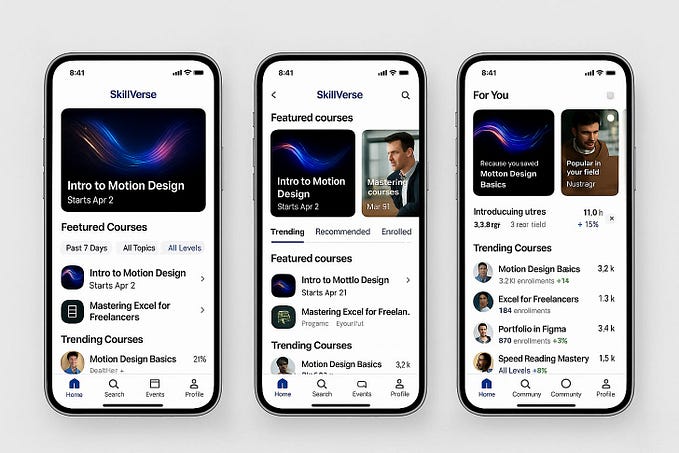Navigating the World of Subscription Services: Key Steps to Success
In last week’s article we talked about what a subscription business model is all about. Now it’s time to understand what it takes to create a subscription business model.

Creating a subscription business model requires a number of specific key steps that a business should follow:
- Identify the opportunity: Identify the opportunity for a subscription business model in your industry. Consider whether your product or service is well-suited to a subscription model, and whether there is demand from customers for a recurring service;
- Define the value proposition: Understanding your competitive advantages that you will provide to your customers is key to gaining a foothold in the marketplace. In addition, this can be your access to exclusive content, cost-savings in marketing, faster profits, and other benefits;
- Identify the target audience: A comprehensive understanding of your audience is the foundation of your product. Potential consumers are the ones who determine all aspects of your product. So ask yourself: who are they? Decide everything about them, from age, gender, profession or hobby to market segment and geographic location;

- Choose the pricing model: Select a pricing model that aligns with the value proposition and target audience. Common pricing models include pay-per-use, flat-rate, tiered pricing, and freemium
- Develop the subscription plan: Design the subscription plan, including the length of the subscription, the frequency of billing, and the payment methods accepted;
- Build the technology infrastructure: Develop the technology infrastructure to support the subscription service, including a payment gateway, customer management system, and billing software;
- Launch the subscription service: Launching a subscription service and marketing it to an audience consists of a large number of promotional activities including direct and indirect marketing programmes, for instance email campaigns, social media ads, personal selling and much more;
- Monitor performance and optimize: Continuously monitor the performance of the subscription service, including customer acquisition, retention, and revenue. Use data insights to optimize the pricing model, subscription plan, and marketing strategy.
Let’s take a closer look at some of the points above.
Choosing the pricing model
So, determining a pricing plan can be quite a complicated process for any business. So once again, businesses need to look at the situation from multiple angles and consider many factors. So what should a business do to determine its pricing plan most effectively?
- Research the market: Conduct market research to understand the pricing of similar subscription services in the industry. This can help to identify a competitive pricing range and inform decisions about how to differentiate the service;

- Identify the value proposition: Determine the unique value proposition of the subscription service and how it differs from competitors. Consider the features, benefits, and value that the service provides to customers, and use this information to set a price that reflects the perceived value;
- Analyze costs: Analyze the costs associated with providing the subscription service, including the cost of producing or acquiring content, the cost of maintaining the technology infrastructure, and other expenses. This can help to determine a price that covers the costs of providing the service and generates a profit;
- Test different pricing models: Test different pricing models, such as tiered pricing or usage-based pricing, to see how they affect customer acquisition and retention. This can help to identify the optimal pricing model that maximizes revenue and customer satisfaction;
- Consider customer feedback: Gather feedback from customers about pricing and use this information to adjust the pricing plan if necessary. This can help to ensure that the pricing plan meets the needs and expectations of the target audience.
Defining and creating a subscription plan
Developing a subscription plan for a business on a subscription model involves defining the terms and conditions of the service, including the length of the subscription, the frequency of billing, and the payment methods accepted. Here are some key steps that can help businesses develop a subscription plan:
- Define the subscription length: Determine the length of the subscription that best suits the needs of the target audience and the nature of the service. Subscription lengths could range from monthly to yearly or even longer;
- Decide on billing frequency: Decide on the frequency of billing, which could be monthly, quarterly, or annually. The billing frequency should align with the subscription length and the value proposition of the service;
- Set the renewal policy: Determine the policy for subscription renewal, including the renewal period, the renewal price, and the process for canceling or modifying the subscription;
- Establish payment methods: Establish the payment methods accepted, which could include credit cards, debit cards, PayPal, or other payment options. Consider the preferences of the target audience and the security and reliability of the payment methods;

- Communicate terms and conditions: Communicate the terms and conditions of the subscription plan clearly and transparently to customers. This could include details about pricing, billing, refunds, and cancellation policies;
- Provide customer support: Provide customer support to help customers with questions or issues related to their subscription. This could include a customer service hotline, email support, or chat support.
Developing the technology infrastructure
Building a technology infrastructure for a business on a subscription model requires careful planning and execution to ensure that the service can be delivered reliably, securely, and at scale. To create an efficient, seamless and reliable infrastructure and avoid infrastructural fragmentation, businesses should consider the following steps:
- Define the technical requirements: Define the technical requirements for the subscription service, including the hosting environment, the database structure, the programming languages and frameworks, and the user interface design;
- Choose the right technology stack: Choose the right technology stack that meets the technical requirements and provides the necessary scalability, security, and performance. Consider using cloud-based infrastructure services, such as Amazon Web Services or Google Cloud, to reduce costs and increase flexibility;
- Develop the software or find the right system for you: Develop the software using agile development methodologies to ensure that the service can be iteratively tested and refined. Use version control systems, automated testing, and continuous integration and deployment tools to ensure that the software is reliable and scalable. However, if you or your team are not developers, building your own system can be extremely expensive, time consuming and labor intensive. Therefore, it’s worth considering various billing and subscription management platform options that can greatly simplify your business processes and not impose excessive costs on your business, but only increase profits and efficiency;
- Implement security measures: Implement security measures, such as encryption, authentication, and authorization, to protect customer data and prevent unauthorized access. Follow industry best practices, such as the OWASP Top 10, to ensure that the service is secure and compliant;
- Monitor and optimize performance: Monitor the performance of the service using tools such as performance monitoring, logging, and analytics. Optimize the service to improve performance, scalability, and reliability;
- Provide customer support: Provide customer support to help customers with technical issues or questions. Use ticketing systems or chat support to ensure that customer requests are handled efficiently.










